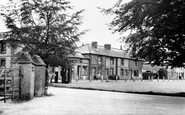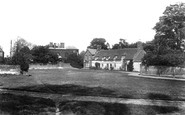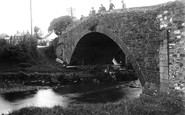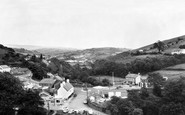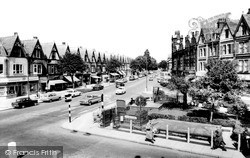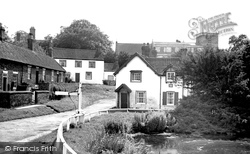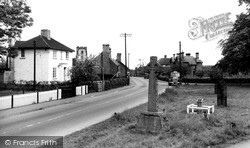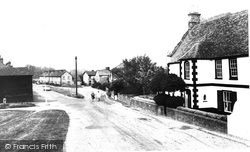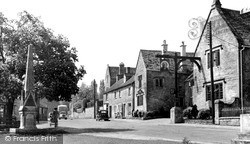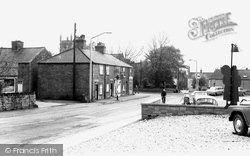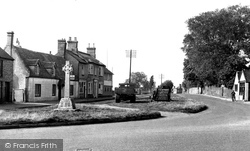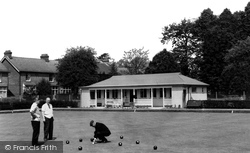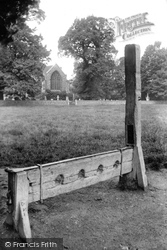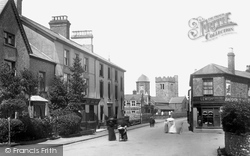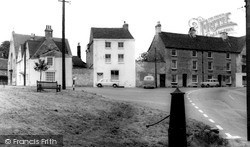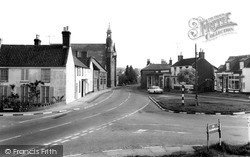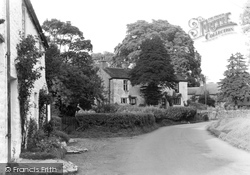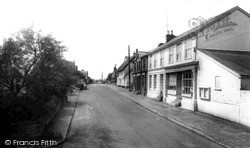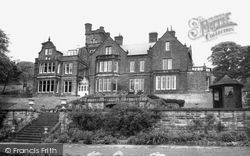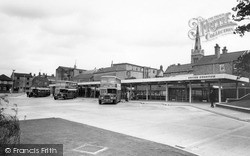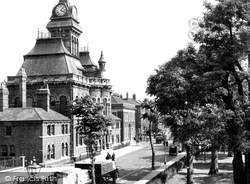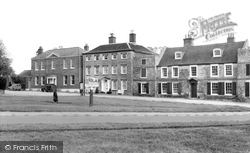Places
8 places found.
Those places high-lighted have photos. All locations may have maps, books and memories.
Photos
4 photos found. Showing results 201 to 4.
Maps
53 maps found.
Books
Sorry, no books were found that related to your search.
Memories
792 memories found. Showing results 101 to 110.
Life In The Village Shop 1944 To 1955
I moved in with my parents (Mr and Mrs Saffin), towards the end of the war. The Canadians were stationed in the huge houses dotted around the village - I was only 10 at the time but I remember the Canadian ...Read more
A memory of Woldingham in 1944
Nuxley Village
I was born in Croft Close 1961, at the top of Osborne Road. I decided today to have a look back at the area. I remember the Old police station which was turned into the driving school, I can remember my journey from Croft Close to go ...Read more
A memory of Belvedere in 1965 by
Memories Of Penrith Road Harold Hill
I was born Beverley Hemmings, in the upstairs bedroom of 19 Penrith Road, Harold Hill in 1955. I lived there until 1969 when we moved to Australia. Back then, we had a big rosebush in the grassy front garden ...Read more
A memory of Harold Hill in 1969 by
Number 5 The Green
My mother Ruth Hadlow lived at number 5 (even though it was the first cottage - should be number 1) memories of visiting my grandad there until he moved in the late eighties. The house next door used to be the old police ...Read more
A memory of Littlebourne in 1968 by
Exciting And Interesting Times
Not sure if anyone reads their comments later in life, but in response to one, it was Cliff Bennett and the Rebel Rousers. Cliff lived in Long Lane, next door to where I lived when I was 3 or 4. We lived in the flats ...Read more
A memory of Uxbridge in 1968 by
Abergarw Estate (The Hostels)
My name is Gareth Davis, brother of Yvonne Davis, and son of Harry & Gwen Davis, originally of 35, Heol yr Ynis, Abergarw Estate, commonly known as "The Hostels". I remember my big sister Yvonne walking me over this ...Read more
A memory of Abergarw in 1954 by
The Good Ol Days
I was born in north London in 1951. We moved to 3 Penzance Road when I was about 6 months old, I lived there until 1972. I remember Wallies van, buying broken biscuits from the shop in Petersfield Ave, playing runouts and tin tan ...Read more
A memory of Harold Hill in 1951 by
Wonderful Memories
We moved Middleton Stoney in 1954 from Weston on the Green (the lay-by transport cafe and garage). We lived in Ardley Road, in the brick house next to PA Turneys and opposite the Jersey Arms. The Varneys lived next door. ...Read more
A memory of Middleton Stoney in 1954 by
Blackmill
I lived in Glyn-Llan (Penny McKay) 1 of 6 girls. I loved spending my summer days down the Dimbath, building dams so we could swim and build forts. We would take a picnic and off we'd go all day and our parents never worried about us and ...Read more
A memory of Blackmill by
My Childhood In Meopham Green
I came to live in Meopham in May 1953 when I was 5 months old. I lived in a house called Kesteven right on the bend in the road at Meopham Green. Derham's the bakers was opposite, where Ken Derham used to bake all his ...Read more
A memory of Meopham in 1953 by
Captions
356 captions found. Showing results 241 to 264.
This must be one of the smallest and one of the most recently created greens in the country.
This unforgettable village cupped in a hollow with a large wayside pond is the home of All Saints' Church.
Known for its world-famous zoo, the village has been carefully allowed to grow.
The village green was known as the heath, and on the left we can see the Heath Engineering Works. In the centre is the Institute, and the shop with the blind down was F Bromley, a butcher's.
The Manor House, built in the late 17th century, was the home of Lancelot 'Capability' Brown, the great landscape gardener. He was lord of the manor of Fenstanton, and his monument is in the church.
The memorial at the edge of the green was erected in 1878 as a memorial to seventeen parishioners who perished during their voyage to New Zealand.
The local garage is in on the Green Shield stamp craze; you were given so many stamps depending on the value of your purchase, which you then stuck in a booklet, each booklet holding a given number of
After crossing the ancient causeway known as the King's Highway (which runs from Belsars Hill at Willingham to Aldreth) we reach the green at Haddenham and the road to Ely.
In 1949, the question of having a bowling green in the Public Gardens was raised with the Urban District Council, but it felt that it was not the right moment.
There is still a stocks and whipping post at Havering-atte-Bower, and there has been since at least the 17th century, when they were destroyed by a mob.
The green was at the heart of the old village. The tower of the Norman church of St Cadfan stands in the centre. The church was restored and partly rebuilt in 1882.
Once the centre of the Anglo-Saxon village, the Green is overlooked by houses mostly dating from the 16th and 17th centuries.
The A12 runs through the village, with Chapel Road (leading to the Congregational chapel of 1778) to the left and Blythburgh Road to the right.
The cottages and mature trees are typical of Bolton-by-Bowland. This beautiful village, once famous for its skilled bowmen, stands on the edge of Bowland Forest.
The imposing early 19th-century building to the right is timber-framed, with the ground floor of the house imitating stone blocks; the shop front has fluted Ionic pilasters.
The memorial seat commemorates the six agricultural labourers who met beneath the sycamore tree (centre) in 1834, and were transported to Australia for taking an illegal oath during an initiation
Nether End c1955 Baslow, situated 8 miles west of Chesterfield and 12 miles south of Sheffield, was once a part of the parish of Bakewell, but became independent in July 1869, taking with it
Littlehampton had been an important port in the Middle Ages and even a Tudor royal shipyard, but it declined until reviving with the canalisation of the Arun in 1723; it was most successful during Victorian
The small village of Lilbourne had a market charter granted in 1219 by Henry III, but it clearly never developed into a fully fledged town.
Until the 1960s, most people relied on public transport, and the green-liveried buses of United Counties carried workers and shoppers in and out of town on busy timetables.
The large trees have gone, but they were replaced in 2004. The 'bus station next to the library and museum has moved – and so has the library.
The large trees have gone, but they were replaced in 2004. The 'bus station next to the library and museum has moved – and so has the library.
Clevedon's immunity from the heavy excursion element which affects many seaside towns renders it a veritable haven of rest.
A village sign by Harry Carter dominates the green. Hingham was responsible for providing New England with many settlers in the 17th century, where they founded another Hingham.
Places (8)
Photos (4)
Memories (792)
Books (0)
Maps (53)



